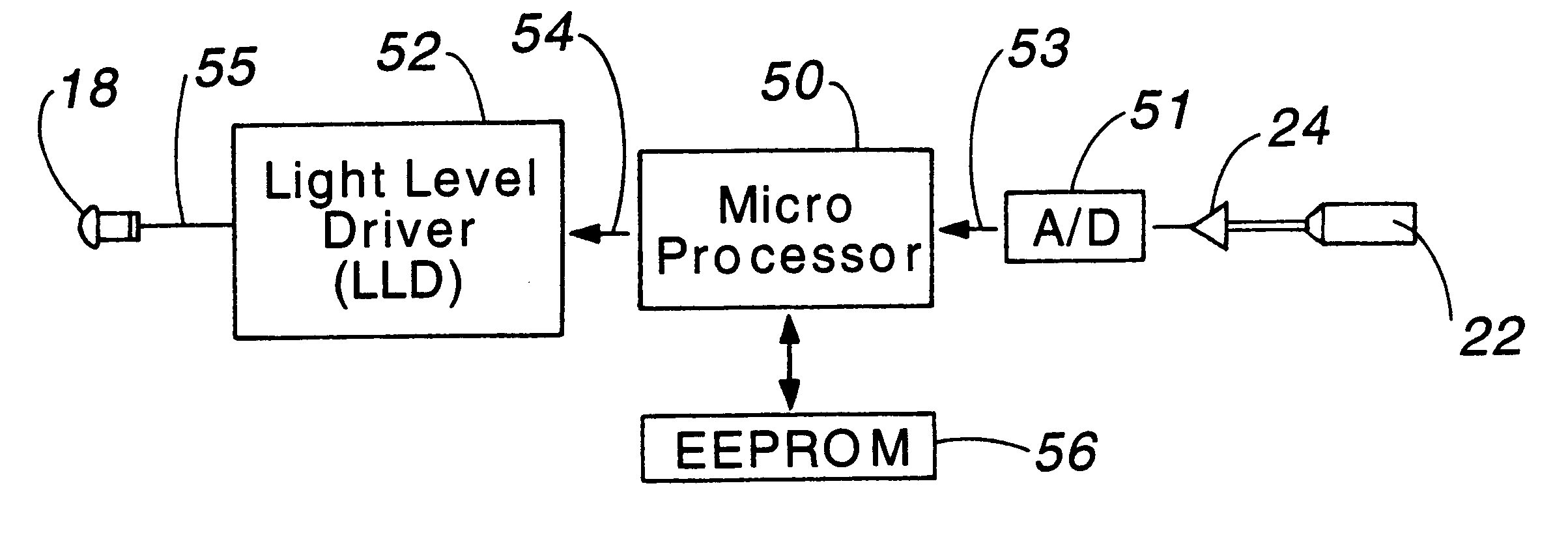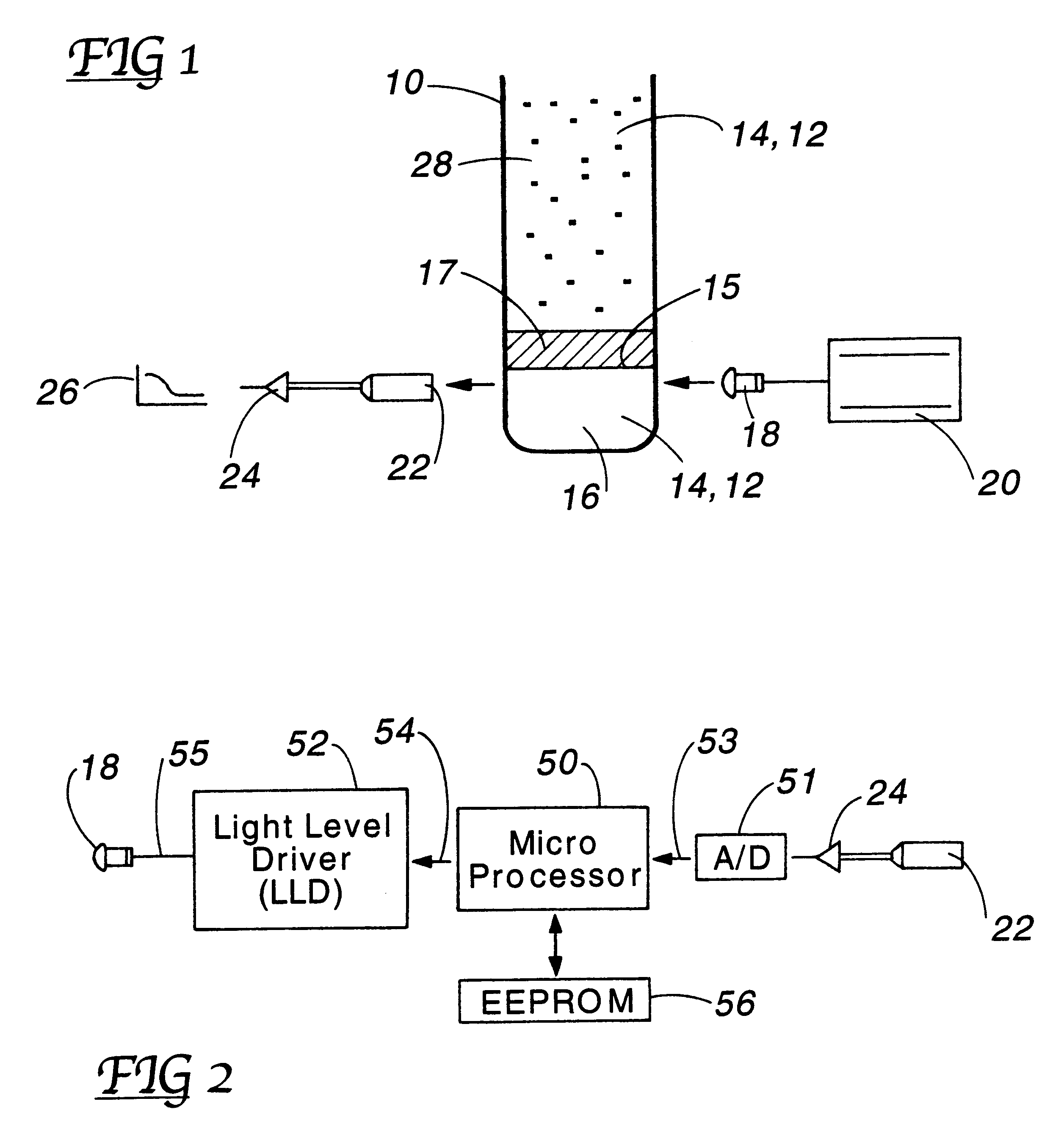Instrument for detection of microorganisms
a microorganism and instrument technology, applied in the field of microorganism detection instruments, can solve the problems of poor signal-to-noise ratio of the detection system, serious disadvantages of led's when used in commercial systems, and significant differences
- Summary
- Abstract
- Description
- Claims
- Application Information
AI Technical Summary
Benefits of technology
Problems solved by technology
Method used
Image
Examples
Embodiment Construction
FIG. 1 illustrates a typical configuration of the various components of a system which can be utilized in accordance with this invention. The vial 10 is made of transparent material. The barrier layer 16 may be composed of any available agar and non toxic dye 14. A separate sterile mixture of liquid media 12 and dye 14 is poured on top of the barrier layer 16. The tested sample 28 is placed in the fluid layer 12,14 and the vial 10 is placed in an incubating device, at an appropriate temperature, to promote the growth of organisms. A light source 18 is positioned at the bottom part of the vial 10, such that the transmitted light is directed through the transparent walls of the vial 10 and the barrier layer 16. In the preferred embodiment a Light Emitting Diode is utilized as the light source 18. In other embodiments, other light sources can be used; such as incandescent lamps, gas discharged lamps, lasers, or combinations of any light source with fiber optic means to transfer the lig...
PUM
| Property | Measurement | Unit |
|---|---|---|
| specific energy level | aaaaa | aaaaa |
| energy | aaaaa | aaaaa |
| concentrations | aaaaa | aaaaa |
Abstract
Description
Claims
Application Information
 Login to View More
Login to View More - R&D
- Intellectual Property
- Life Sciences
- Materials
- Tech Scout
- Unparalleled Data Quality
- Higher Quality Content
- 60% Fewer Hallucinations
Browse by: Latest US Patents, China's latest patents, Technical Efficacy Thesaurus, Application Domain, Technology Topic, Popular Technical Reports.
© 2025 PatSnap. All rights reserved.Legal|Privacy policy|Modern Slavery Act Transparency Statement|Sitemap|About US| Contact US: help@patsnap.com


